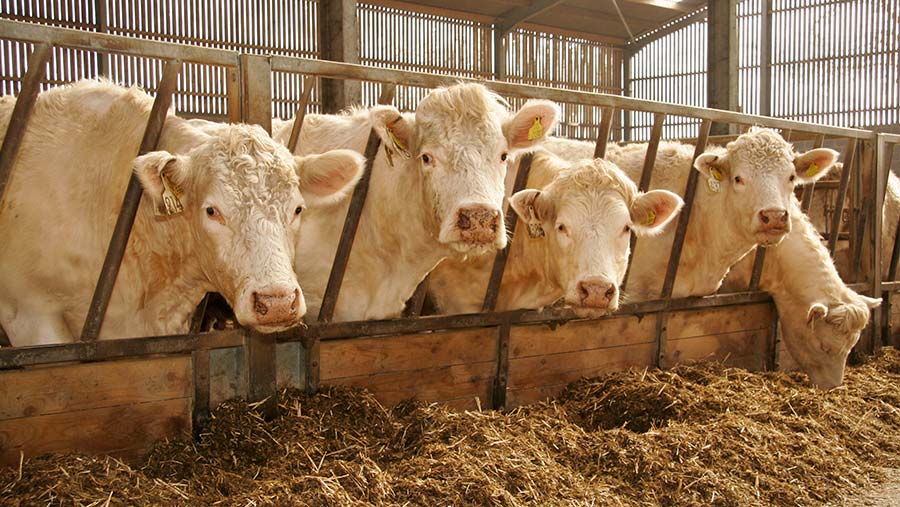Finished cattle numbers rise as hot weather forces sales
 © Tim Scrivener
© Tim Scrivener The weather is putting finishers under pressure and more cattle are coming forward.
Demand for beef is good, but auction markets in the week to Tuesday (10 July) saw finished cattle numbers 6% higher than the previous week and prices fall 2.5p/kg across steers, heifers and young bulls, which averaged 192.8p/kg, 204.5p/kg and 182.7p/kg, respectively.
Markets reported prices holding up for animals with a good finish, but many that looked as if they had been sent in a bit early took a drop.
See also: Using sewage sludge safely – what farmers need to know
GB finished steer and heifer numbers through deadweight centres rose by 1.5% and 6.7%, respectively, in the week ended 7 July, while cull cow numbers rose 10.4%.
Deadweight steer prices lost 1.5p/kg to average 370.3p/kg. The heifer average was little changed at 373.4p/kg and cull cow prices fell 5.5p/kg to average 258.8p/kg.
Store cattle sold across Great Britain in the week to 7 July also lost ground, with all ages and breeds down, but dairy types losing most, according to the AHDB’s latest report.
Thrapston auctioneer Alastair Brown said if producers were short of grass and had store cattle to sell, sooner rather than later may be the best decision, before the hot, dry weather forces more cattle into the market.
With grass supplies running short, producers are having to put cattle onto ground that is or was destined for silage. Some are already dipping into meagre carryover winter stocks or into this year’s silage.
“This may push more cattle into the marketplace as farmers try to conserve winter stocks, control input costs or just run out of grazing altogether,” said AHDB red meat analyst Tom Forshaw.
“As producers look to get rid of cattle, we may see some cattle coming forward out of specification, both weight and fat class, which you would expect to naturally bring our average prices down, but that’s not saying that the base price will change from the processors.
“Bigger farms with larger feed stocks are going to be able to weather the storm better than smaller producers, but another two weeks of dry weather would see even the bigger farms under pressure – if not in the short term, then later on in the year.”
